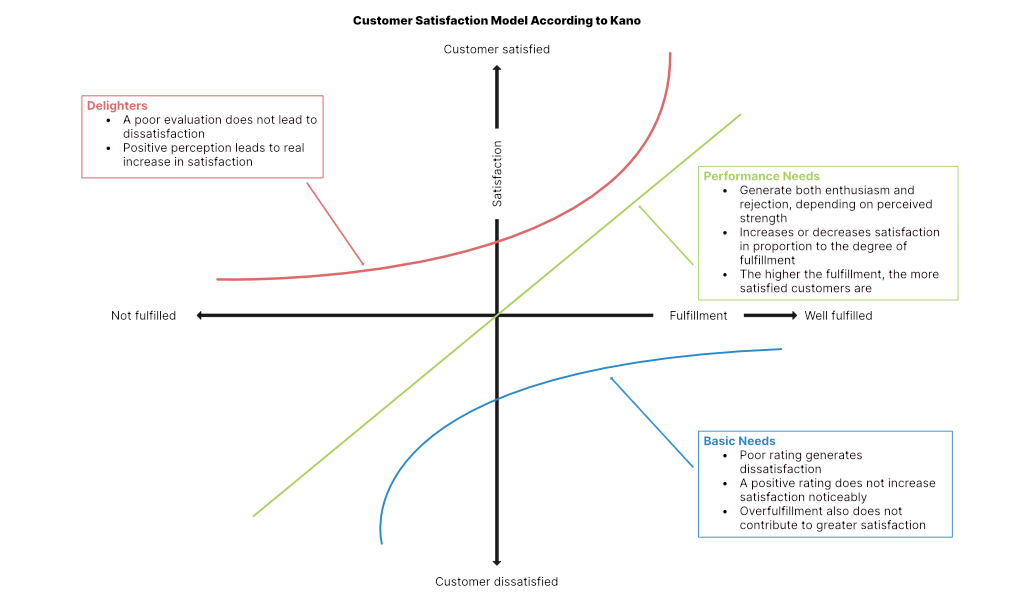Target-oriented evaluation and control of product developments and marketing activities
A driver analysis provides essential insights into the interdependencies between various characteristics of a product or partial performance of an offer and the overall assessment.
The results can be used to evaluate and control product developments and marketing activities in a targeted manner.
Driver analyses answer the following questions:
- What significance does a partial performance – such as price or quality – of an offer have for the perceived overall evaluation?
- What need for action or room for maneuver exists when individual product characteristics or performance dimensions are over- or under-fulfilled?
- At what level of performance does the improvement of a driver, for example the product characteristic “sweetness” or the performance quality, not lead to any significant effect on the dependent variable, for example the willingness to buy the product or overall satisfaction with the offer?
- At what level of a product characteristic or the performance level of an offer does the acceptance tilt, so that the overall satisfaction and performance are no longer evaluated positively?

